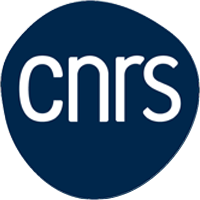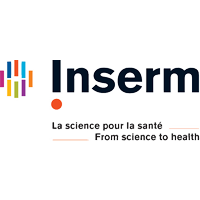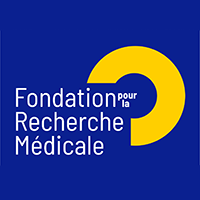The research in our laboratory focuses on identifying host cellular pathways that determine human susceptibility to viral diseases. We study viruses responsible for severe pathologies, with particular emphasis on emerging RNA viruses (mosquito-borne arboviruses, respiratory pathogens) and DNA polyomaviruses, notably BK virus, a major opportunistic threat in transplant medicine. Our overarching goal is to elucidate how these viruses exploit host functions to replicate, persist, and evade immune responses. By uncovering these mechanisms, we aim to identify novel vulnerabilities that can be harnessed for innovative antiviral strategies.
To achieve this, we integrate approaches at the interface of virology, cell biology, and structural biology. Our work combines systematic loss- and gain-of-function screening, advanced proteomics, transcriptomic profiling of patient samples, high-resolution live-cell imaging, and integrative structural biology to guide functional studies of virus–host interactions. We also leverage primary human cells, mouse models, established cell lines, and computational tools to dissect the molecular relationships between viral proteins and host factors. This multidisciplinary framework enables us to translate fundamental discoveries into clinical applications, bridging basic research with therapeutic innovation.
Our laboratory is embedded within a dynamic university hospital campus, fostering close collaborations with clinical teams across specialties (infectious diseases, clinical virology, and kidney transplantation), enhancing the translational impact of our research.
Over the last two decades, our studies have provided key mechanistic insights into how human viruses exploit cellular pathways to replicate and cause disease. A central theme of our research has been the systematic identification of host dependency and restriction factors, followed by mechanistic dissection and translation into antiviral strategies. This trajectory has enabled us to make landmark discoveries across flaviviruses, alphaviruses, and coronaviruses, while also laying the conceptual and technical groundwork for tackling both emerging infections (such as the recent outbreak of Oropouche virus) and opportunistic infections such as BK polyomavirus in immunocompromised patients.
Our early contributions revealed how mosquito-borne flaviviruses gain entry into human target cells. We identified DC-SIGN as a critical entry factor for dengue virus in skin dendritic cells (EMBO Rep. 2003; JBC 2005), establishing a paradigm for mosquito-to-human transmission. We then discovered that by exposing the “eat-me” signal phosphatidylserine on their envelope, dengue virus (DENV) and Zika virus (ZIKV) mimic apoptotic bodies to enter target cells via TIM and TAM receptors, two receptor families normally responsible for clearing dying cells (Cell Host Microbe 2012; Nat Rev Microbiol 2015). Later, we demonstrated that TIM-1 is not merely a binding factor but an authentic entry receptor, requiring ubiquitination of its cytoplasmic tail and ESCRT-mediated trafficking for productive infection (Cell Rep. 2018). These findings uncovered a general strategy whereby flaviviruses hijack immune clearance pathways to establish infection.
In parallel, we investigated the molecular basis of ZIKV pathogenesis. We showed that AXL, a receptor tyrosine kinase of the TAM family, acts as the major entry receptor for human fetal brain cells. Notably, ZIKV binding to AXL activates receptor phosphorylation and suppresses type I interferon responses, providing a direct link between receptor usage and immune evasion (Cell Rep. 2017). We translated this mechanistic insight into therapeutic opportunities by demonstrating that both an engineered Axl decoy receptor (MYD1) and the kinase inhibitor R428 efficiently block ZIKV infection (Cell Rep. 2017; Front Immunol 2022). This work provided one of the first proofs of concept that targeting host receptors can be an effective antiviral strategy against ZIKV.
Beyond viral entry, we dissected the architecture of the DENV replication complex (RC). By purifying the RC using tagged DENV replicons, we generated the first global map of its host interactome (Cell Rep. 2017). Among these host factors, the oligosaccharyltransferase (OST) complex emerged as essential for viral protein glycosylation and genome replication. Importantly, we showed that pharmacological inhibition of OST by NGI-1 strongly impaired DENV infection, thereby identifying OST as a promising druggable host target. Further studies revealed that RACK1, Vigilin, and SERBP1 link viral RNA to the translation machinery (J Virol 2022), while the DPMS complex regulates both RNA replication and glycoprotein folding (J Virol 2020). Together, these findings deepened our understanding of flavivirus replication and highlighted host glycosylation pathways as critical antiviral intervention points.
We then turned our attention to alphaviruses, where we uncovered the molecular basis of chikungunya virus (CHIKV) tissue tropism. Using genome-wide CRISPR screens, we identified FHL1, a muscle-enriched cytoplasmic protein, as the critical determinant for CHIKV tropism and pathogenesis. Remarkably, Fhl1 knockout mice were completely resistant to CHIKV infection and disease (Nature 2019). Mechanistically, FHL1 is hijacked by the viral protein nsP3 to mediate RNA replication. This breakthrough provided the first molecular explanation for alphavirus tissue specificity and pathogenesis. Building on this work, we recently resolved the structure of CHIKV nsP3 by cryo-EM (Nat Commun 2024), providing the foundation for structure-guided drug discovery.
During the COVID-19 pandemic, we rapidly applied our expertise to SARS-CoV-2. We demonstrated that plasmacytoid dendritic cells mount robust interferon responses via IRAK4- and UNC93B1-dependent pathways (J Exp Med 2021; iScience 2025). In collaboration with J.-L. Casanova (Imagine Institute& Rockefeller University), we further showed that genetic defects in IRF7 or TLR7 severely compromise this response in patients with life-threatening disease (Science 2020; Sci Immunol 2021). At the same time, we established a global SARS-CoV-2 RNA interactome using ChIRP-MS, identifying new host dependency factors with therapeutic potential (Cell Rep. 2022).
Taken together, our integrated approach to dissect virus–host interactions, spanning CRISPR functional genomics, interactomics, structural biology, and pharmacological inhibition, provides a versatile framework to investigate the biology of emerging viruses, anticipate future epidemic threats, and apply our expertise to opportunistic pathogens in immunocompromised patients, with particular emphasis on BK polyomavirus as a current medical priority.
► Kartasheva-Ebertz D, Topalis D, Umana-Diaz C., Ayas O, Couture L , Tonnerre P , Medvedovic J, Meertens L., Soumelis V and Amara A (2025) Differential response of human plasmacytoid pre-dendritic cells to SARS-CoV-2 variants. iScience Volume 28, Issue 9113394September 19, 2025.
► Kril V, Hons M, Amadori C, Zimberger C, Couture L, Bouery Y, Burlaud-Gaillard J, Karpov A, Ptchelkine D, Thienel AL, Kümmerer BM, Desfosses A, Jones R, Roingeard P, Meertens L, Amara A*, Reguera J*. Alphavirus nsP3 organizes into tubular scaffolds essential for infection and the cytoplasmic granule architecture. (2024) Nature Communications Sep 16;15(1):8106. doi: 10.1038/s41467-024-51952-z.*co-last , co-corresponding author
► Labeau A, Fery-Simonian L, Lefevre-Utile A, Pourcelot M, Bonnet-Madin L, Soumelis V, Lotteau V, Vidalain PO, Amara A# and Meertens L# (2022) Characterization and functional interrogation of the SARS-CoV-2 RNA interactome. Cell reports., Apr 26;39(4):110744, # co-last, corresponding author
► Delaugerre, C ; Foissac, F ; Abdoul, H ; Masson, G ; Choupeaux, L ; Dufour, E & al , 2022. Prevention of SARS-CoV-2 transmission during a large, live, indoor gathering (SPRING): a non-inferiority, randomised, controlled trial., Lancet Infect Dis, , 22, 341-348
► Brugier A, Hafirassou M.L, Pourcelot M, Baldaccini M, Kril V, Couture L, Kümmerer B.M, Gallois-Montbrun S, Bonnet-Madin L, Vidalain P.O, Delaugerre C., Pfeffer S , Meertens L, Amara A. (2022) RACK1 associates with RNA-binding proteins Vigilin and SERBP1 to facilitate dengue virus replication J.Virol., Apr 13;96(7):e0196221.
► Kril V, Aïqui-Reboul-Paviet O, Briant L, Amara A. (2021). New Insights into Chikungunya Virus Infection and Pathogenesis. Annual Reviews in Virology. Sep 29;8(1):327-347. doi: 10.1146/annurev-virology-091919-102021. Epub 2021 Jul 13.
► Asano T, Boisson B, Onodi F, Matuozzo D, Moncada-Velez M, Maglorius Renkilaraj MRL, Zhang P, Meertens L, Bolze A, Materna M, Korniotis S, Gervais A, Talouarn E, Bigio B, Seeleuthner Y, Bilguvar K, Zhang Y, Neehus AL, Ogishi M, Pelham SJ, Le Voyer T, Rosain J, Philippot Q, Soler-Palacín P, Colobran R, Martin-Nalda A, Rivière JG, Tandjaoui-Lambiotte Y, Chaïbi K, Shahrooei M, Darazam IA, Olyaei NA, Mansouri D, Hatipoğlu N, Palabiyik F, Ozcelik T, Novelli G, Novelli A, Casari G, Aiuti A, Carrera P, Bondesan S, Barzaghi F, Rovere-Querini P, Tresoldi C, Franco JL, Rojas J, Reyes LF, Bustos IG, Arias AA, Morelle G, Christèle K, Troya J, Planas-Serra L, Schlüter A, Gut M, Pujol A, Allende LM, Rodriguez-Gallego C, Flores C, Cabrera-Marante O, Pleguezuelo DE, de Diego RP, Keles S, Aytekin G, Akcan OM, Bryceson YT, Bergman P, Brodin P, Smole D, Smith CIE, Norlin AC, Campbell TM, Covill LE, Hammarström L, Pan-Hammarström Q, Abolhassani H, Mane S, Marr N, Ata M, Al Ali F, Khan T, Spaan AN, Dalgard CL, Bonfanti P, Biondi A, Tubiana S, Burdet C, Nussbaum R, Kahn-Kirby A, Snow AL; COVID Human Genetic Effort; COVID-STORM Clinicians; COVID Clinicians; Imagine COVID Group; French COVID Cohort Study Group; CoV-Contact Cohort; Amsterdam UMC Covid-; Biobank; NIAID-USUHS COVID Study Group, Bustamante J, Puel A, Boisson-Dupuis S, Zhang SY, Béziat V, Lifton RP, Bastard P, Notarangelo LD, Abel L, Su HC, Jouanguy E, Amara A, Soumelis V, Cobat A, Zhang Q, Casanova JL. X-linked recessive TLR7 deficiency in ~1% of men under 60 years old with life-threatening COVID-19. Science Immunol., august 19;6(62):eabl4348. doi: 10.1126/sciimmunol.abl4348.
► Onodi F., Bonnet-Madin L., Meertens L. Karpf L., Poirot J., Zhang SY., Picard C., Puel A., Jouanguy E, Zhang Q., Le Goff J., Molina J.M, Delaugerre C., Casanova J.L, Amara A #, and Soumelis V. # (2021) SARS-CoV-2 induces human plasmacytoid pre-dendritic cell diversification via UNC93B and IRAK4 . J.Exp.Med Apr 5;218(4):e20201387. doi: 10.1084/jem.20201387. # co-last, corresponding author
► Zhang Q, Bastard P, Liu Z, Le Pen J, Moncada-Velez M, Chen J, Ogishi M, Sabli IKD, Hodeib S, Korol C, Rosain J, Bilguvar K, Ye J, Bolze A, Bigio B, Yang R, Arias AA, Zhou Q, Zhang Y, Onodi F, Korniotis S, Karpf L, Philippot Q, Chbihi M, Bonnet-Madin L, Dorgham K, Smith N, Schneider WM, Razooky BS, Hoffmann HH, Michailidis E, Moens L, Han JE, Lorenzo L, Bizien L, Meade P, Neehus AL, Ugurbil AC, Corneau A, Kerner G, Zhang P, Rapaport F, Seeleuthner Y, Manry J, Masson C, Schmitt Y, Schlüter A, Le Voyer T, Khan T, Li J, Fellay J, Roussel L, Shahrooei M, Alosaimi MF, Mansouri D, Al-Saud H, Al-Mulla F, Almourfi F, Al-Muhsen SZ, Alsohime F, Al Turki S, Hasanato R, van de Beek D, Biondi A, Bettini LR, D’Angio’ M, Bonfanti P, Imberti L, Sottini A, Paghera S, Quiros-Roldan E, Rossi C, Oler AJ, Tompkins MF, Alba C, Vandernoot I, Goffard JC, Smits G, Migeotte I, Haerynck F, Soler-Palacin P, Martin-Nalda A, Colobran R, Morange PE, Keles S, Çölkesen F, Ozcelik T, Yasar KK, Senoglu S, Karabela ŞN, Rodríguez-Gallego C, Novelli G, Hraiech S, Tandjaoui-Lambiotte Y, Duval X, Laouénan C; COVID-STORM Clinicians; COVID Clinicians; Imagine COVID Group; French COVID Cohort Study Group; CoV-Contact Cohort; Amsterdam UMC Covid-19 Biobank; COVID Human Genetic Effort; NIAID-USUHS/TAGC COVID Immunity Group, Snow AL, Dalgard CL, Milner JD, Vinh DC, Mogensen TH, Marr N, Spaan AN, Boisson B, Boisson-Dupuis S, Bustamante J, Puel A, Ciancanelli MJ, Meyts I, Maniatis T, Soumelis V, Amara A, Nussenzweig M, García-Sastre A, Krammer F, Pujol A, Duffy D, Lifton RP, Zhang SY, Gorochov G, Béziat V, Jouanguy E, Sancho-Shimizu V, Rice CM, Abel L, Notarangelo LD, Cobat A, Su HC, Casanova JL (2020) . Inborn errors of type I IFN immunity in patients with life-threatening COVID-19. Science 2020 Oct 23;370(6515):eabd4570. doi: 10.1126/science.abd4570. Epub 2020 Sep 24. PMID: 32972995£
► Labeau A, Simon-Loriere E, Hafirassou M-H, Bonnet-Madin L, Tessier S, Zamborlini A, Dupré T, Seta N, Schwartz O, Chaix M.L, Delaugerre C., Amara A# and Meertens L#. A genome-wide CRISPR-Cas9 screen identifies the dolichol-phosphate mannose synthase complex as a host dependency factor for dengue virus infection. J VIROL, Mar 17;94(7). pii: e01751-19. doi: 10.1128/JVI.01751-19. # Co-last, corresponding authors
► Meertens L., Hafirassou M.L, Couderc T., Bonnet-Madin L., Kril V., Kümmerer B.M, Labeau A, Brugier A, Simon-Loriere E., Burlaud-Gaillard J., Doyen C., Pezzi L., Goupil T., Rafasse S, Vidalain P.O, Bertrand Legout A., Gueneau L., Juntas-Morales R., Ben Yaou R, Bonne G., De Lamballerie X, Benkirane M., Roingeard P., Delaugerre C, Lecuit M and Amara A. (2019) FHL1 is a major host factor for Chikungunya infection. Nature, Oct;574(7777):259-263.
► Monel B, Rajah MM, Hafirassou ML, Sid Ahmed S, Burlaud-Gaillard J, Zhu PP, Nevers Q, Buchrieser J, Porrot F, Meunier C, Amraoui S, Chazal M, Salles A, Jouvenet N, Roingeard P, Blackstone C, Amara A, Schwartz O. (2019) Atlastin Endoplasmic Reticulum-Shaping Proteins Facilitate Zika Virus Replication. J. VIROL Nov 13;93(23). pii: e01047-19. doi: 10.1128/JVI.01047-19
► Dejarnac O, Hafirassou ML, Chazal M, Versapuech M, Gaillard J, Perera-Lecoin M, Umana-Diaz C, Bonnet-Madin L, Carnec X, Tinevez JY, Delaugerre C, Schwartz O, Roingeard P, Jouvenet N, Berlioz-Torrent C, Meertens L, Amara A. (2018) TIM-1 Ubiquitination Mediates Dengue Virus Entry. Cell Reports May 8;23(6):1779-1793. doi: 10.1016/j.celrep.2018.04.013.
► Hafirassou ML, Meertens L, Umaña-Diaz C, Labeau A, Dejarnac O, Bonnet-Madin L, Kümmerer BM, Delaugerre C, Roingeard P, Vidalain PO, Amara A (2017) A Global Interactome Map of the Dengue Virus NS1 Identifies Virus Restriction and Dependency Host Factors. Cell Reports Dec 26;21(13):3900-3913. doi: 10.1016/j.celrep.2017.11.094.
► Monel B, Compton AA, Bruel T, Amraoui S, Burlaud-Gaillard J, Roy N, Guivel-Benhassine F, Porrot F, Génin P, Meertens L, Sinigaglia L, Jouvenet N, Weil R, Casartelli N, Demangel C, Simon-Lorière E, Moris A, Roingeard P, Amara A, Schwartz O. (2017) Zika virus induces massive cytoplasmic vacuolization and paraptosis-like death in infected cells. EMBO J. Jun 14;36(12):1653-1668. doi: 10.15252/embj.201695597. Epub 2017 May 4.
► Meertens L, Labeau A, Dejarnac O, Cipriani S, Sinigaglia L, Bonnet-Madin L, Le Charpentier T, Hafirassou ML, Zamborlini A, Cao-Lormeau VM, Coulpier M, Missé D, Jouvenet N, Tabibiazar R, Gressens P, Schwartz O, Amara A (2017). Axl Mediates ZIKA Virus Entry in Human Glial Cells and Modulates Innate Immune Responses. Cell Reports Jan 10;18(2):324-333. doi: 10.1016/j.celrep.2016.12.045.
► Fernandez-Garcia, M. D., L. Meertens, M. Chazal, M. L. Hafirassou, O. Dejarnac, A. Zamborlini, P. Despres, N. Sauvonnet, F. Arenzana-Seisdedos, N. Jouvenet and Amara A (2016). « Vaccine and Wild-Type Strains of Yellow Fever Virus Engage Distinct Entry Mechanisms and Differentially Stimulate Antiviral Immune Responses. » MBio 2016 7(1): e01956-01915.
► Carnec, X., L. Meertens, O. Dejarnac, M. Perera-Lecoin, M. L. Hafirassou, J. Kitaura, R. Ramdasi, O. Schwartz and Amara A (2015). The Phosphatidylserine and Phosphatidylethanolamine Receptor CD300a Binds Dengue Virus and Enhances Infection. » J VIROL , 90(1): 92-102.
► Hamel, R., O. Dejarnac, S. Wichit, P. Ekchariyawat, A. Neyret, N. Luplertlop, M. Perera-Lecoin, P. Surasombatpattana, L. Talignani, F. Thomas, V. M. Cao-Lormeau, V. Choumet, L. Briant, P. Despres, A. Amara, H. Yssel and D. Misse (2015). « Biology of Zika Virus Infection in Human Skin Cells. » J VIROL 89(17): 8880-8896.
► Amara A & Mercer J. (2015) Viral apoptotic mimicry. Nature Reviews Microbiology Aug;13(8):461-9.
► Meertens L, Carnec X, Perera Lecoin M , Ramdasi R, Guivel-Benhassine F, Lew E, Lemke G, Schwartz O and Amara A (2012) The TIM and TAM Families of Phosphatidylserine Receptors Mediate Dengue Virus Entry. Cell Host & Microbe, 12, 4, 544-557
Céline AMADORI
Melissa AIT-SAID
Lucie BONNET MADIN
Khadija BOURBIBE
Alexis BRUGIER
Xavier CARNEC
Marie-Laure CHAIX-BAUDIER
Sylvain CHAWKI
Élodie COLIN
Ophélie DEJARNAC
Maria-Dolores FERNANDEZ-GARCIA
Luc FERY
Vasiliya KRIL
Erwan KUBES
Mohamed Hamine LAFIRASSOU
Athena LABEAU
Zoé LAMA
Laura LEVI
Stéphane MAROT
Manuel PERERA
Marie POURCELOT
Rasika Mohan RAMSADI
Sarah TESSIER
Emma TOUZET
Claudia UMANA-DIAZ








